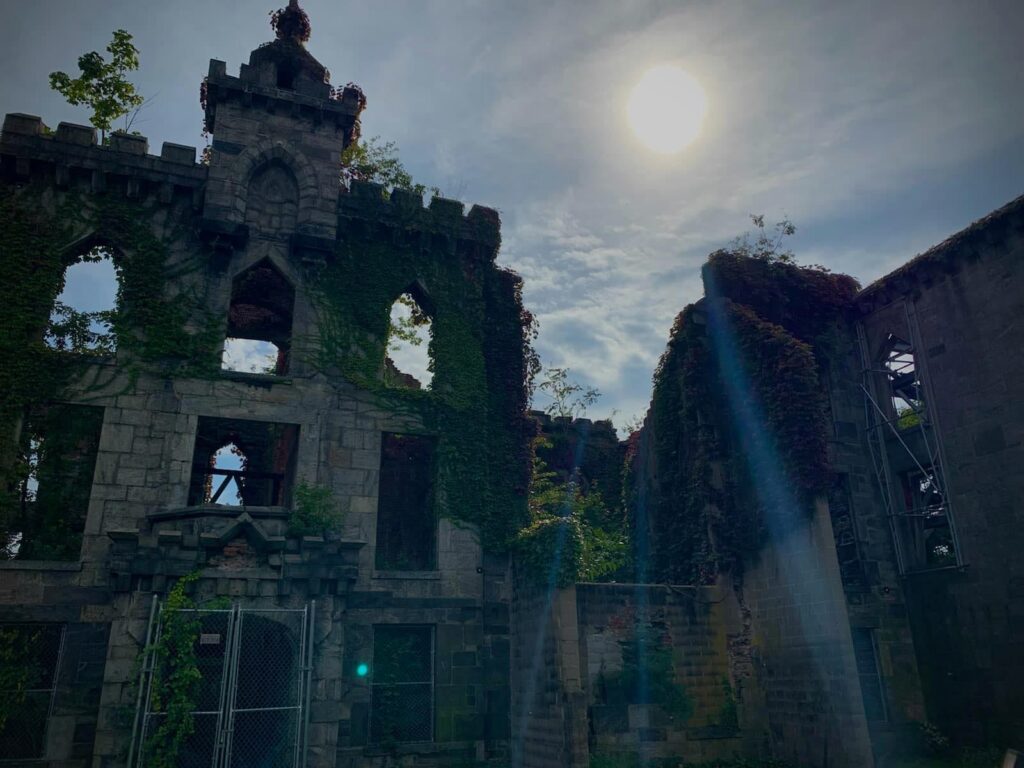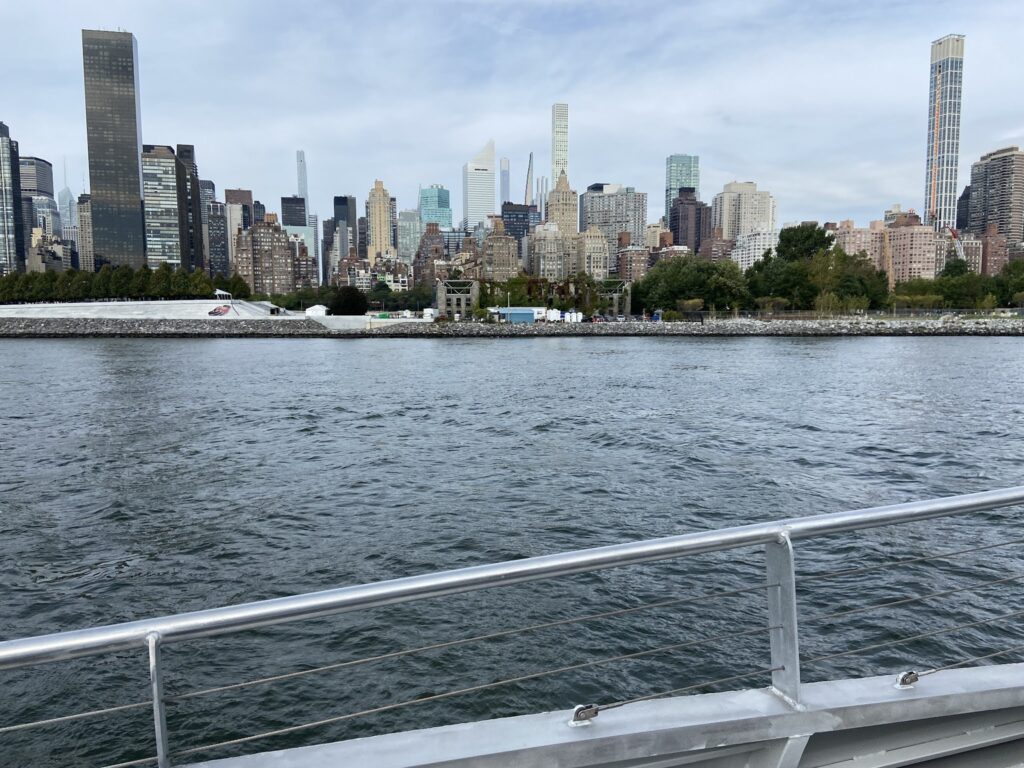
Visit Roosevelt Island today and you will encounter a pleasant oasis set apart from the hustle and bustle of New York City. That’s not to say that it is vacant of modern structures. In addition to a high-tech campus, restaurants, upscale apartment buildings, and a trendy hotel, you will walk upon grassy parklands teeming with geese and get terrific views of Manhattan.
It’s a far cry from the macabre isle that it once was. In the late 1800’s, when my upcoming paranormal historical romance takes place, the narrow strip of land in the East River was called Blackwell’s Island. It was home to prisons, alms houses, and the New York City Lunatic Asylum. In other words, it was a place to which the most marginal members of society were banished.

Since Blackwell’s Island was closed to the public, horrific abuses often went unnoticed- and unregulated. At the NYC Lunatic Asylum, epileptic and schizophrenic patients were plunged into ice-filled tubs, a treatment euphemistically called “hydro-therapy.” For calmer patients, a daily bath was shared with a long line of inmates. God help you if you were at the end of that line, as the water would be black and filled with lice. Straight jackets, euphemistically called “camisoles,” beatings, and solitary confinement were routinely employed to keep the patients in line, and addictive opioids like laudanum and morphine were handed out like candy.

The doctors who worked in the facilities were usually fresh out of medical school, and the opportunity to “practice” on mental patients and prisoners was one step above working on cadavers. Many psychiatrists, freakily called “alienists” at the time, believed that mental illness involved demon possession. Mistakes were made. Innocent people died. Such was life in 1888, when the heroine of my new book entered the asylum.
An ambitious young journalist, Nellie Bly, faked insanity to write an expose on the asylum. A local judge, seeing Bly dressed in schmattes and incoherently mumbling, quickly ordered her involuntary commitment at the asylum where she observed the ice baths, the beatings, the degradation, and death in her midst. Once Bly revealed her identity as a reporter, she was released from the NYC Lunatic Island and later wrote of the female patients, “I left them in their living grave.”

Ruins of the Smallpox Hospital today.
The asylum closed in 1894. While the ruins of a smallpox hospital remain on the island, all that is left of the NYC Lunatic Asylum is a domed octagonal structure that once served as the admissions building. Ironically, upscale apartments are now attached to the Octagon.
Here’s a brief excerpt from my upcoming paranormal historical romance describing the plight of the heroine, who has been involuntarily committed to the asylum. In this scene, Maggie discusses her fears with a widow (who is actually a ghost commissioned to assist Maggie) on the boat ride from midtown Manhattan to the shores of Blackwell’s Island. I hope you like it.
Are they sending you to the lunatic asylum?” the widow softly inquired.
“Yes.” I whispered. The boat rocked and moved forward, fueling my despair.
“I’ve been there,” said the widow.
“You have?”
She nodded. “Years ago.”
“Is it as horrible as they say?”
“It is a despicable place,” the widow replied. “A dragon has charge over the wards. Her name is Nurse Stoddard. She is a heartless beast. Watch out for her.”
“Is there anything else that I should know?” I eagerly asked. “Is there a way to escape?”
The widow lifted the string of polished stones. They glimmered like mica against a slender beam of moonlight streaming through slats in the floor above.
“There is no way to escape,” she replied. “Even if you did, how would you cross the river and get back to Manhattan? A guard lives at the pump house. He strolls the shore and keeps a lookout for escapees sneaking into boats.”
“What if I swam across the river?” I asked. The quarter of a mile trek through warm waters in the summer would be difficult, but not impossible.
She shook her head, the black crepe crumpling against her collar. “River Runners always drown. The currents are strong.”
My shoulders dropped. “But how will I survive in a madhouse?”
“The dragon possesses a large bunch of keys,” the widow whispered. “They jingle from a rope belt tied to her waist. Each one is shaped differently. There is a hidden cellar beneath the building called The Lodge. It is where they store dead patients before they bury them in Potter’s Field. There is a small door in the corner of the cellar. It leads to catacombs that reach deep into the earth. A skeleton key opens that door.”
“Does it lead outside?” I asked.
“It leads to freedom,” she whispered.
My heart leapt with hope. “But how will I cross the river once I have escaped?”
“I told you,” the widow said, “there is no way to escape the asylum, but what you discover in the catacombs will set you free.”

The deceptively calm waters contain strong currents.

The Octagon, once part of the asylum.
Sources:
“Ten Days in a Madhouse,” Nellie Bly, 1887
“Damnation Island: Poor, Sick, Mad & Criminal in 19th Century New York,” by Stacy Horn, Algonquin Books of Chapel Hill, 2018




